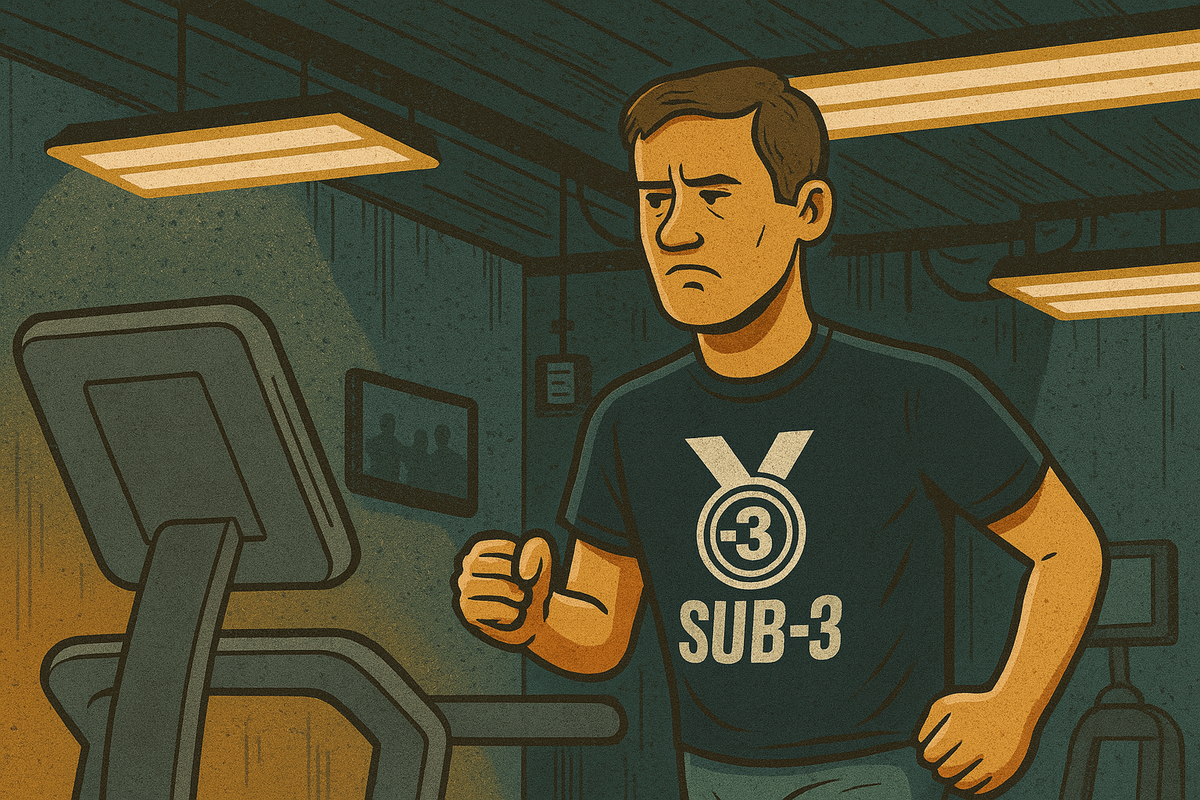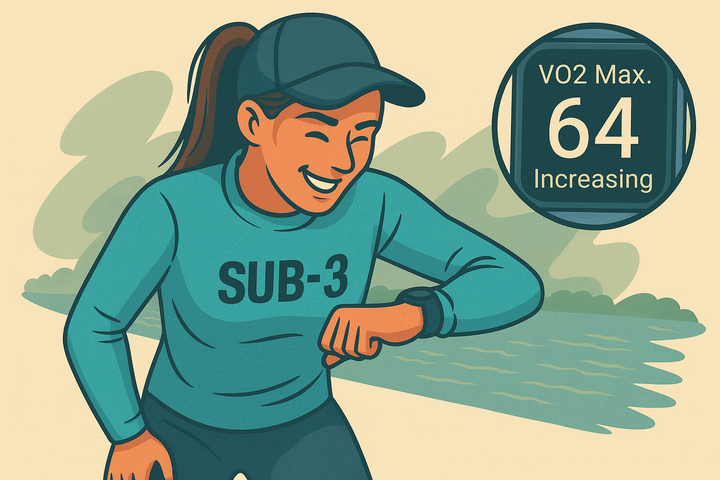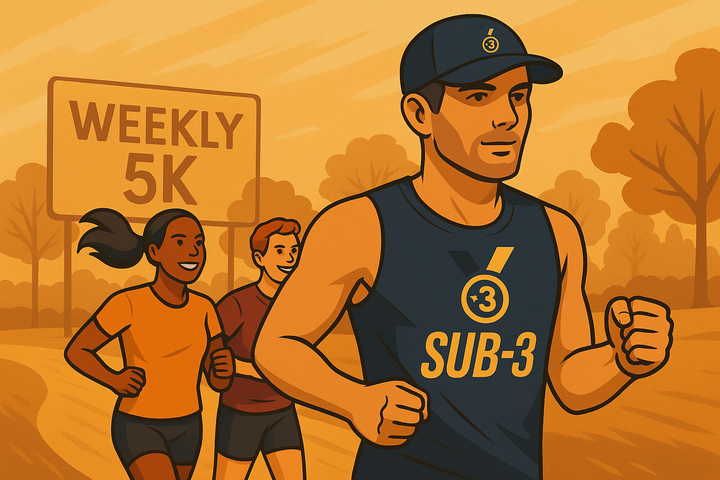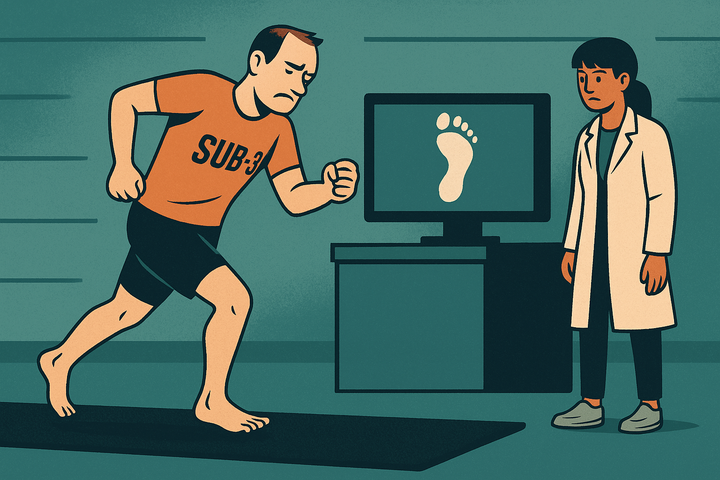Should I use a treadmill for sub-3 training?
Stuck inside with no other option? A treadmill can work in a pinch, but for sub-3 runners the road is still the best training ground.

I hate treadmills. Always have. So much of the joy of running comes from being outside - feeling the weather, breathing real air and being in contact with the world. That might mean a quiet path in winter, a long stretch beside fields in summer or, yes, even a grim urban loop where you’re dodging bins, being semi-chased by grubby foxes and breathing in the occasional burst of petrol fumes. Still better than a treadmill.
On a treadmill, you're indoors in an artificial environment. The air is stale or processed. The lighting is fluorescent and grim. The gym often smells of sweat and supermarket-brand deodorant. And no matter what playlist you line up, you’re still stuck in a box, staring at a screen, going nowhere. Worst of all, you're not really running your pace - you’re running the treadmill’s pace. That subtle distinction matters.
And it’s not just about enjoyment - it’s about adaptation. One of the overlooked problems with treadmill training is monotony. Your stride, cadence and footstrike are always the same. That sameness can cause problems. A 2020 systematic review in Sports Medicine found that treadmill running produces subtle but consistent differences in biomechanics compared to overground running - especially at higher intensities. Ground contact time was slightly longer, knee flexion reduced and propulsion mechanics altered. In short, running on a treadmill doesn’t fully prepare your body for the variability and micro-adjustments of real-world road racing.
I saw this first-hand in São Paulo. Travelling for work, and too hot and overcrowded to pound the pavements safely, I gave in and used the treadmill. Within days I had niggles. My feet and ankles weren’t used to the fixed rhythm and unchanging surface. (I finally found the inner city cycle lanes first thing in the morning were a workable solution - and traffic-free Avenida Paulista on a Sunday!)
Sub-3 runners should train on the surface they’ll race on wherever possible. Road races require real-world adaptations - kerbs, cambers, sudden shifts in pace and position - and treadmills simply can’t replicate that.
That said, I’d still take some running over none. If you’re stuck with childcare, travelling through an unsafe or busy city, recovering from injury or facing extreme weather (and I don’t mean a bit of drizzle), then a treadmill has its place. But it’s a backup. Nothing more.
Intervals and tempo runs should be run by feel, not fixed numbers on a screen. And while you can change pace on a treadmill, it’s clunky and often breaks your rhythm.
Unless you’re training in a lab or have literally no other option, the treadmill is just a compromise. Useful sometimes - but never ideal.
Enjoyed this article? Help keep Sub-3 running — support us with a coffee.
To help fund the running of the site, Sub-3 is an Amazon Associate and earns from qualifying purchases. We only recommend gear or kit that has genuinely helped in our own running and that we believe is worth considering.



